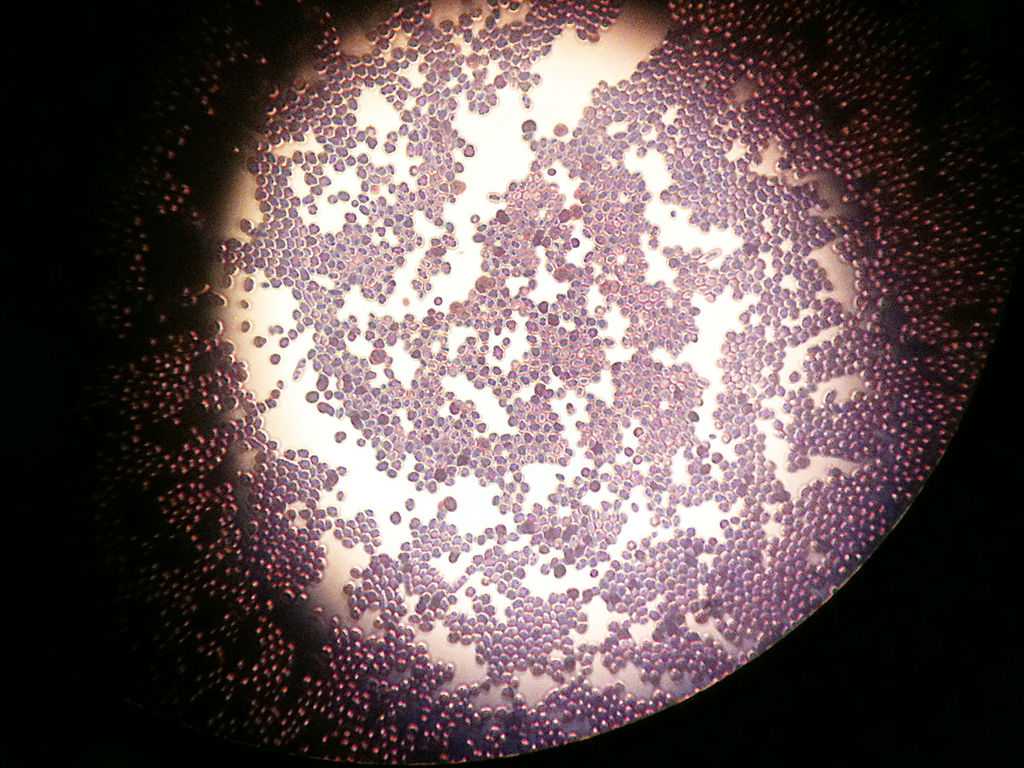Baker's Yeast Under The Microscope. Photo taken from Sciworthy
Adapted from: https://www.timescolonist.com/islander/bc-researcher-unveils-space-yeast-that-could-enable-deep-space-travel-6403782
Welcome to this month’s SimplySynbio theme: space exploration! People have since long ago explored their curiosities of the world around us. One of these curiosities, space exploration, has unlocked many of these mysteries of our universe, improving life back on Earth and introducing the potential for life beyond Earth. Yet, the inhabitable environment of space poses several economical, technical, and health challenges for successful space exploration endeavours.
Challenge: Radiation in Space
One of the most prominent long-term risks of space exploration is the exposure to cosmic radiation. On Earth, we experience lower levels of cosmic radiation due to the atmosphere and magnetic fields surrounding our planet. Beyond the Earth’s protective surfaces, we face much more dangerous and higher energy radiation from space that can directly damage our DNA – imagine taking 150 to 6,000 chest X-rays as you are in space. While spacecraft and spacesuits provide a form of barrier, they are not completely foolproof. Here is when synthetic biology and microorganisms jump in.
Introducing Yeast
Yeast, specifically Saccharomyces cerevisiae (baker’s yeast), is a single-celled microorganism most well known for its fermentation properties in making bread, beer, and wine. As many of yeasts’ gene functions were derived from humans, it is extensively used as a model organism to study the biological processes in human cells. Therefore, there has been solid research in studying how yeast genes respond to DNA-damaging agents, such as cosmic radiation.
Space Yeast!
In December 2022, a cell biologist from the University of British Columbia, Corey Nislow, heard the news of his 6000 bar-coded strains of baker’s yeast returning to Earth’s surface following a trip to the moon on NASA’s Artemis 1. In each yeast strain, one gene was deleted and a unique DNA barcode sequence for identification purposes – if the deleted gene was responsible for cell growth and replication, the specific yeast strain would lag in growth when exposed to cosmic radiation in the space environment. Thus, as the scientists receive the yeast strains back, they can sequence the DNA and count the number of times each barcode appears, therefore studying each strain’s growth. Low counts of strains with specific genes deleted can indicate that those genes are potentially essential for survival against cosmic radiation.
While the samples produced from the Artemis 1 Mission will take decades to study and sequence through, the thriving population of yeast cells coming back from space showed promising results. With the knowledge of specific genes that are damaged or protected against cosmic radiation, we can then apply synthetic biology and genetic engineering principles to protect human DNA from radiation. For instance, some insights and plans given by Nislow’s team include developing countermeasures that can allow the damaged yeast DNA to repair itself. Looking into the future, like mRNA COVID-19 vaccines, an mRNA countermeasure for cosmic radiation derived from yeast strains can be simply delivered into humans to equip us with the proper radiation protection. Not only would this be revolutionary for space exploration, but back on Earth, it can help cancer patients recover from radiation therapy.
Synthetic biology + Space at iGEM
With just yeast, scientists (at UBC!) have demonstrated how synthetic biology principles can help humans combat the grand challenges of space travel. At iGEM, many teams tackled space exploration with their synthetic biology projects. In 2023, iGEM recognized the demand and introduced a new village, or competition category, specifically dedicated to space projects. From iGEM and beyond, the future potential of synthetic biology applications to space exploration is exciting, groundbreaking, and inviting for scientists and engineers to explore it.
